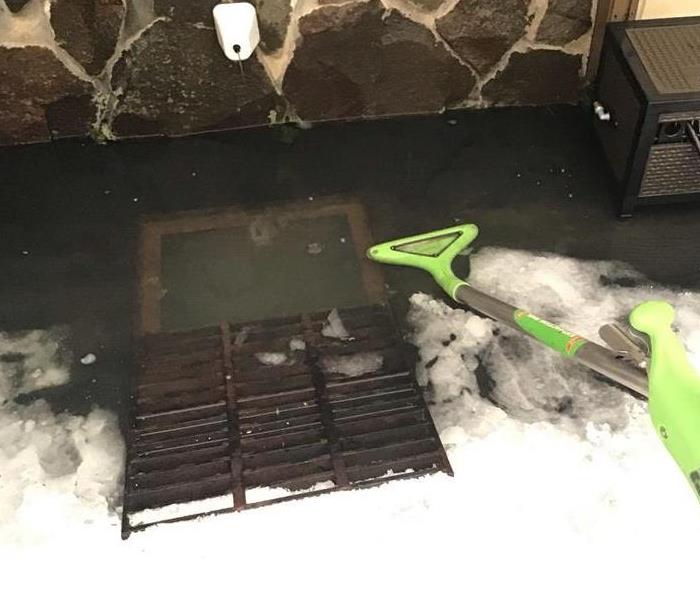Why SERVPRO!
2/19/2021 (Permalink)
The most common type of damage SERVPRO sees during these extreme cold weather events is water damage due to frozen pipes. In general, pipes are more likely to freeze when the temperature is below 20 degrees Fahrenheit. The resulting water damage can be extensive. Outdoor pipes and pipes in unheated areas of the home can freeze if they are not properly insulated or if temperatures are severely cold. SERVPRO Franchise Professionals can quickly and safely repair water damage caused by frozen pipes.
Outdoor pipes most likely to freeze include:
- Outdoor hose bibs
- Swimming pool supply lines
- Water sprinkler lines
Pipes in unheated or partially heated areas are also at risk of freezing, including:
- Basements
- Crawl spaces
- Garages
Another potential hazard to consider as the snow/ice begins to melt is damage to your roof and ice dams. An ice dam is formed when snow melts unevenly on a roof and refreezes into a dam at the edge of the roof, near the eaves. This dam prevents any further snowmelt from draining off of the roof. This standing water can back up under shingles, leak into a home, and cause significant water damage to ceilings, walls, and other areas. Ice dams can also tear off gutters and loosen shingles.
Snow and ice can cause significant damage to your gutters and roof. The additional weight of snow and ice can even cause a roof to collapse. When there’s a cold snap, water can get into cracks and small spaces and expand when it freezes, causing larger cracks and more damage. The repetition of freezing and thawing cycles can cause small cracks to get larger.
What you can do until help arrives
After any water damage situation, your primary focus should be safety.
- Is it safe to stay in the house?
- Electrical and "slip and fall" hazards are some of the most prevalent concerns.
- Only do activities that are safe for you to perform.
- Wet materials can be VERY heavy. Be careful!
What To Do After Flooding
- Remove excess water by mopping and blotting.
- Wipe excess water from wood furniture after removal of lamps and tabletop items.
- Remove and prop wet upholstery and cushions.
- Place aluminum foil or wood blocks between furniture legs and wet carpeting.
- Turn air conditioning on for maximum drying in summer.
- Remove colored rugs from wet carpeting.
- Remove art objects to a safe, dry place.
- Gather loose items from floors.
What Not To Do After Flooding
- Don't leave wet fabrics in place. Hang furs and leather goods.
- Don't leave books, magazines, or other colored items on wet carpet or floors.
- Don't use your household vacuum to remove water.
- Don't use television or other household appliances.
- Don't turn on ceiling fixtures if ceiling is wet, and keep out of rooms where ceilings are sagging.





 24/7 Emergency Service
24/7 Emergency Service
